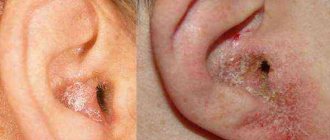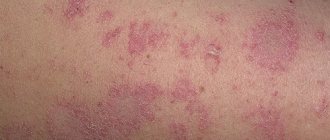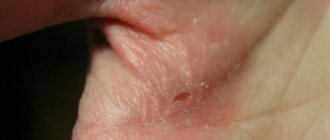Histamine is a well-studied chemical that is produced and stored in the body. Provides a significant part of the body's immune response and is released in huge quantities during an allergic reaction.
Histamine is a monoamine that does not belong to either the catecholamine or indoleamine groups. Histamine is metabolized from its precursor, the conditionally essential amino acid histidine. Many foods are rich in this compound: tuna, salmon, lean pork, beef fillet, chicken breasts, soybeans, peanuts, lentils. In addition, the substance is present in many vitamin complexes and pharmacological preparations.
Histamine is released at certain synapses (points of contact between neurons), where it acts as a chemical messenger. It also enters the bloodstream, where it works as a hormone. Histamine is broken down by the DAO enzyme and can be removed from the synapse by reuptake.
Histamine acts on four subtypes of postsynaptic receptors located in the brain, as well as in smooth muscle, stomach cells and bone marrow. The substance is considered a neuromodulator because its function is to regulate the release of other neurotransmitters such as acetylcholine, norepinephrine and serotonin. The human brain has presynaptic receptors that control the amount of histamine released. This system is used to set limits on how intensely and for how long the histamine-releasing neuron will operate.
Functions of histamine
Histamine is primarily associated with the functioning of the immune system. During the immune response, histamine is released and initiates physiological changes necessary to fight the pathogen, including increased blood pressure, temperature, swelling and constriction of the bronchi.
In addition to its central role in allergic reactions, gastric acid secretion, and peripheral inflammation, histamine has an important neurotransmitter function in the central nervous system. Histaminergic neurons originate from the tuberomammillary nucleus of the posterior hypothalamus and send projections to most parts of the brain.
Presumably, the H3 receptor functions as an inhibitory heteroreceptor. Thus, activation of brain H3 receptors reduces the release of acetylcholine, dopamine, norepinephrine, serotonin and some peptides. However, histamine can also increase the activity of some of these systems through the H1 and H2 receptors. Activation of the NMDA receptor, μ-opioid receptor, dopamine D2 receptor, and some serotonin receptors may increase neuronal histamine release, whereas other signaling receptors appear to decrease release.
Histamine in the central nervous system may be involved in various brain functions. Some of the putative physiological roles of this chemical involve its ability to increase the excitability of neurons in the central nervous system. In fact, in the brain, histamine is considered a regulator of activity throughout the brain.
The psychoactive properties of histamine have not yet been sufficiently studied. But it has been established that the central histamine system is involved in many processes, such as arousal, control of pituitary hormone secretion, nutritional suppression and cognitive functions. The effects of neuronal histamine are mediated through G protein-coupled H1-H4 receptors.
Histamine is known to help regulate the sleep-wake cycle. Histamine neurons fire quickly during wakefulness, function slowly during rest, and do not function at all during REM sleep. Blocking the synthesis and release of histamine is a well-known pharmacological approach used to induce sleep in humans. The prominent role of histamine as a wakefulness-promoting substance has generated interest in the treatment of wakefulness and sleep disorders, especially narcolepsy, through modulation of H3 receptor function.
Histamine, or its deficiency, also plays a role in sexual dysfunction. Supplementation with folic acid, niacin (nicotinic acid), and L-histidine (a precursor substance) has been found to be effective in correcting histamine deficiency.
Postmortem studies have revealed changes in the histaminergic system in neurological and psychiatric diseases. Histamine levels in the brain are reduced in patients with Alzheimer's disease, while abnormally high concentrations of histamine are found in the brains of patients with Parkinson's disease and schizophrenia.
Low histamine levels are associated with seizures, and may have some connection with epilepsy. A huge body of scientific work indicates that the histaminergic system of the brain is of central importance in the mechanism of development of various types of epileptic seizures. It has been confirmed that increasing the level of histamine by introducing its precursor L-histidine or thioperamide can reduce the level of epileptic activity. At the same time, alpha-fluoromethylhistidine, which is an inhibitor of histidine decarboxylase (an enzyme from the class of lyases), initiates a decrease in the volume and concentration of histamine in the central nervous system, which causes aggravation of convulsive seizures.
The intensity and volume of histamine release changes in response to different types of traumatic brain injury. For example, increased histamine production in ischemic brain injury plays an important role in the recovery process from neuronal damage.
Neuronal histamine is also involved in the perception of pain signals. Drugs that increase the concentration of the substance in the brain and spinal cord have antinociceptive (pain-relieving) properties.
Histaminergic neurons appear to mediate various signaling mechanisms in the brain. The role of histamine as a neuromodulator has received the most attention. Activation of a small number of tuberomammillary nucleus neurons is thought to stimulate the release of histamine, which subsequently increases excitability in target cells widely distributed throughout the brain.
Histamine is a powerful regulator of many functions of the hypothalamus. Neuroendocrine responses, especially vasopressin release, are physiologically regulated by histaminergic neurons. Hypothalamic histamine may also be involved in the physiological regulation of the release of oxytocin, prolactin, adrenocorticotropic hormone and beta-endorphin.
This chemical is an effective “controller” of food and water intake. Histamine and compounds that increase extracellular histamine concentrations are potent suppressors of food intake. Action on the H1 receptor in the ventromedial nucleus of the hypothalamus appears to account for these effects. There is evidence that histamine contributes to the physiological control of appetite. Evidence includes data from genetically obese experimental rats that have very low concentrations of hypothalamic histamine.
Histamine is also a potent dipsogen, a thirst-inducing agent that promotes alcohol consumption. Other proposed roles of the substance in the regulation of autonomic functions include thermoregulation, glucose and lipid metabolism, and blood pressure control.
Histamine may contribute to neurological and psychiatric diseases. The role of the neurotransmitter has been closely studied in several neurodegenerative diseases, such as multiple sclerosis, Alzheimer's disease and Wernicke's encephalopathy. It has been suggested that histamine may be involved in disease processes by contributing to vascular pathologies, defects in the blood-brain barrier, changes in immune function, or even cell death. The ability of histamine to enhance excitatory transmission at NDMA receptors may explain its neurotoxic effect.
However, neuronal histamine does not always enhance brain damage. It has a protective effect against certain types of cerebral ischemia. Histaminergic neurons are also activated by vestibular disturbances, resulting in the release of histamine in the vomiting centers of the brainstem. Thus, neuronal histamine may be one of the mediators of motion sickness.
Contraindications
Skin testing is not performed for any skin disease. This remedy is also not used in cases of severe heart disease, hypotension and vascular dystonia , respiratory tract diseases (including a history ), uncompensated renal dysfunction, severe hypertension , pheochromocytoma . Contraindications also include pregnancy , breastfeeding , and childhood.
Excess histamine
Histamine intolerance, sometimes called histaminosis, is an excess accumulation of histamine in the human body. An imbalance in histamine intolerance occurs between the synthesis and selective release of histamine versus the breakdown of the substance by enzymes.
Symptoms of excess histamine include:
- skin rashes, urticaria, eczema, itching;
- headache, migraine attack;
- hot flashes;
- dizziness:
- discharge from the nasal passages, nasal congestion;
- labored breathing;
- pain when swallowing;
- bloating (flatulence), diarrhea, constipation, nausea, vomiting, stomach pain, heartburn;
- blood pressure surges: from high (hypertension) to low (hypotension);
- tachycardia, arrhythmia;
- menstrual irregularities (dysmenorrhea);
- cystitis, urethritis;
- the appearance of edema;
- joint pain;
- sleep disorders;
- nervousness;
- Bad mood.
It is hypothesized that active or passive exposure to tobacco smoke contributes to histamine intolerance. Accumulation of the substance is possible due to improper and unbalanced nutrition, when the diet is dominated by:
- canned fish
- ham, smoked meat products, sausage meat products;
- offal;
- hard cheeses (the higher the degree of maturity of the cheese, the higher the histamine content);
- alcoholic drinks, especially sterilized beer.
Please note that high histamine levels can cause life-threatening conditions. Therefore, measures should be taken to identify intolerance to the substance and achieve its normal level. The basis of therapy is a special diet and the exclusion of certain pharmacological agents.
Indications for use
Indications for use of this product are as follows:
- polyarthritis;
- allergy;
- pain due to damage to peripheral nerves ;
- articular and muscular rheumatism ;
- migraine;
- diagnosis of hypersecretory conditions of the stomach.
The drug is used in skin tests to diagnose allergies .
Overdose
the airway is maintained , as well as the use of mechanical ventilation and oxygen if necessary. In case of injection , a tourniquet is applied near the injection site in order to slow down the absorption of the active substance into the blood . It is possible to administer antihistamines , 0.3–0.5 mg of pinephrine hydrochloride subcutaneously for the treatment of hypotension (up to 2 times every 20 minutes).
Manifestation of allergic reactions
An allergic reaction is a complex mechanism of the body's immune system to a foreign body that has entered the body.
Antigens and antibodies begin to interact. When the antigen first enters the body, it causes increased sensitivity and leads to stimulation of antibody production. In special memory cells, information about the antigen is stored; in plasma cells, special protein molecules – antibodies (immunoglobulins) – are synthesized.
Antibodies are characterized by strict individuality, and they react only to a specific antigen. Thus, antigen molecules are neutralized.
Repeated antigen load requires the body to produce large amounts of antibodies. They attach to specific antigens, resulting in the formation of an integrated antigen-antibody complex. These elements are characterized by the ability to settle on mast cells. They contain histamine, which is not active.
The allergic reaction at the next stage is associated with the activation of the histamine substance. It comes out of the granules into the blood.
Histamine exhibits its biological effect after the concentration in the blood exceeds the norm. This type of reaction is called antigenic. An exogenous allergic reaction may occur, which develops through the food mechanism:
- upon receipt of foods that contain large quantities of histamine;
- products that stimulate the release of histamine from mast cells.
Immune complexes are not involved in this reaction.
Improving our condition
Research shows that people with histamine intolerance should not eat foods containing long-chain fats because they stimulate the production of histamine during digestion. But foods with medium chain fats do not cause problems.
Scientists also suggest that the resulting imbalance between histamine and the DAO enzyme may be responsible for the development of various inflammatory bowel diseases. Therefore, as some studies indicate, taking soluble fiber with food or as a supplement can increase the content of an enzyme in the intestine that processes histamine and protects the intestinal wall from permeability.
You can improve your body's levels of DAO enzyme by adding foods and supplements that contain vitamin C and vitamin B6 . Research shows that these vitamins can reduce histamine levels and stimulate the activity of the DAO enzyme.
Information sources
- https://www.ncbi.nlm.nih.gov/pubmed/24433203
- https://www.ncbi.nlm.nih.gov/pubmed/22028584
- https://ajcn.nutrition.org/content/85/5/1185.long
- https://www.ncbi.nlm.nih.gov/pubmed/2528
- https://www.ncbi.nlm.nih.gov/pmc/articles/PMC3658496/
- https://www.sciencedirect.com/science/article/pii/S0009912012005681?np=y
- https://www.ncbi.nlm.nih.gov/pmc/articles/PMC3199434/
- https://www.ncbi.nlm.nih.gov/pmc/articles/PMC3099351/
- https://www.ncbi.nlm.nih.gov/pmc/articles/PMC4315779/
- https://www.ncbi.nlm.nih.gov/pmc/articles/PMC3625874/
- https://www.ncbi.nlm.nih.gov/pubmed/11827762
- https://link.springer.com/chapter/10.1007%2F978-1-4613-0325-1_10#page-1
- https://www.imd-berlin.de
The information on this site has not been evaluated by any medical organization. We do not seek to diagnose or treat any disease. The information on the site is provided for educational purposes only. You should consult your physician before acting on information from this site, especially if you are pregnant, nursing, taking medications, or have any medical condition.
Rate this article
Average 4.8 Total votes (16)
Role in the body
Histamine performs various functions in the body - it regulates the release of hormones from the anterior pituitary gland, stimulates the secretions of certain glands (including gastric juice). However, first of all, it is a mediator in the development of allergies . After contact of the mucous membrane with the allergen, histamine is released and characteristic allergy symptoms appear.
Thus, histamine:
- causes swelling, itching and hyperemia on the skin,
- in the lungs causes contraction of smooth muscles and increased sputum production,
- stimulates peripheral sensory nerves, causing sneezing attacks,
- also dilates blood vessels, which causes nasal congestion,
- also causes redness, tearfulness, itching and burning of the eyes and swelling of the eyelids,
- in patients with food allergies, it leads to contraction of smooth muscles and increased production of digestive juices and diarrhea due to irritation of the mucous membrane of the small intestine.
Content in food products
Histamine can occur naturally in foods, occur during fermentation and ripening, or due to improper storage when food spoils.
rich in histamine :
- sour foods,
- sausages,
- Fish and seafood.
Because of this, people who are intolerant to histamine should exclude them from their diet, as well as citrus fruits, which trigger the release of histamine from mast cells.
Fresh, unprocessed foods contain some histamine. Its amount increases significantly during food processing processes. It is believed that the longer food is stored or matured, the more histamine it contains.
There are other factors that affect its content in food. For example, in the case of fish, this is its type, freshness, transportation conditions and storage temperature. It is histamine that is responsible for the characteristic smell of spoiled fish.
It should be emphasized that histamine is a stable chemical compound that is not broken down under the influence of elevated temperatures during frying or baking processes.
Foods with the highest histamine content
| Fish (mg/kg) | Cheeses (mg/kg) | Meat (mg/kg) |
|
|
|
| Alcohol (µl/l) | Vinegar (µl/l) | Vegetables (mg/kg) |
|
|
|
Histamine and alcohol
If, after drinking alcohol, in addition to headaches and stomach problems, your face, chest turns red, and after a few hours or immediately a rash appears, this may be histamine intolerance. This is not the same as an alcohol allergy.










